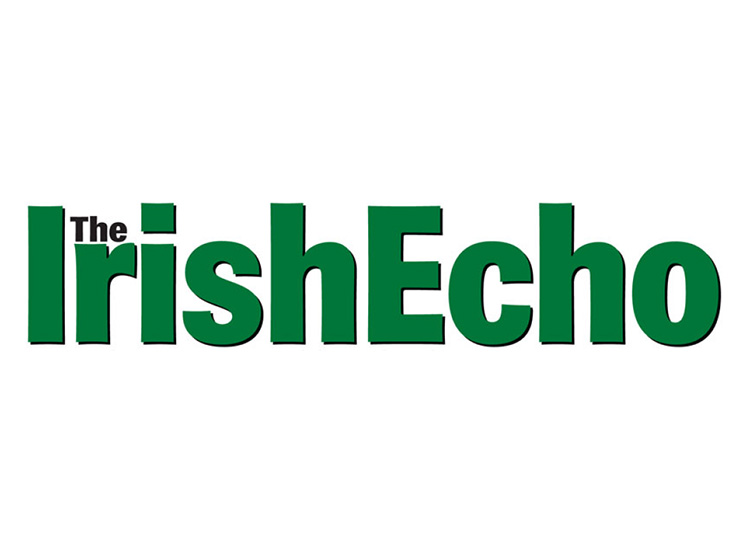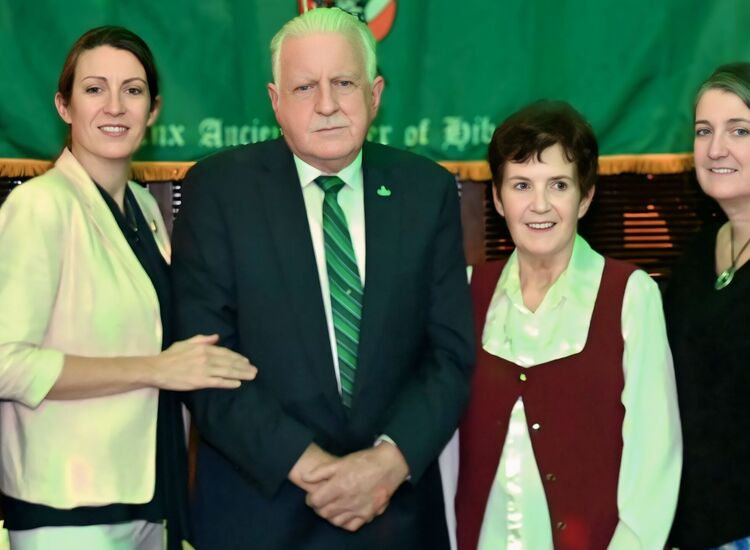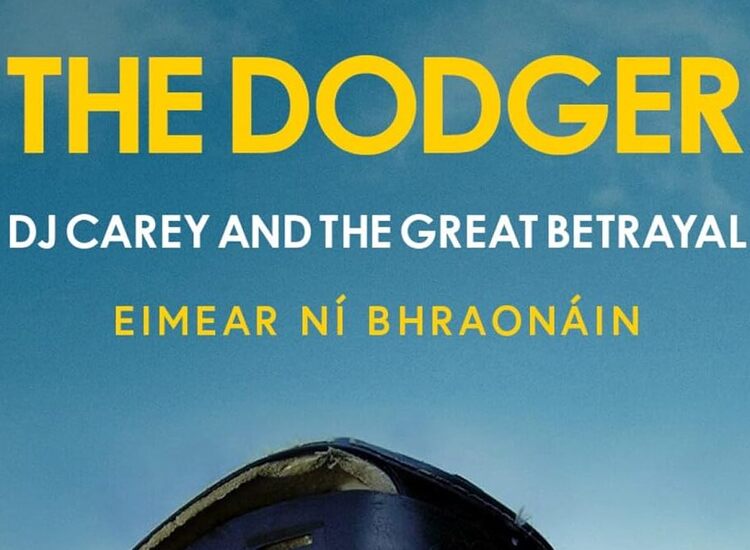The shilling recalls for the author a narrow escape.
By Tom Phelan
I was twelve when I worked my first paying job. For a day picking potatoes for our aunt Peg, my brother and I received a six-penny bar of Cadbury’s milk chocolate and a half-crown each. The half-crown, one-eighth of a pound, was worth thirty pennies. That was in 1952 when thirty pennies could buy thirty Peggy’s Legs, 120 Bull’s Eyes, ten Lucky Bags, ninety sticks of Black Jack licorice, five boxes of pellet-gun ammunition, sixty fishhooks, ten rolls of Fruit Gums, five tubes of Smarties, ten Turkish Delights, five Rolos, five gaily painted solid rubber balls, seven cinema tickets, or five newspaper cones filled with potato chips and sprinkled with salt and white vinegar.
Even though I had seen a half-crown before, this occasion was my first awakening to art as I gazed at the beauty of the coin in the clayey remains of Aunt Peg’s potato field. But it wasn’t the intricacy of the fourteen-stringed, embellished harp on the obverse that pulled me out of the potato stalks; it was the horse on the reverse. This was no namby-pamby, Hollywood-bedecked “Silver” with Roy Rodgers up. Surrounded in a halo of beading, this horse was proud, muscular, perfectly groomed, its cocked ears and lifted tail announcing it was about to charge toward a distant challenge on thundering hooves. With nothing to indicate its sex, it was neither mare nor stallion.
To me, that horse was Dad’s black mare Carnera, named for the Italian boxer Primo Carnera – aka the Ambling Alp. Out in the Grove Field with her foal, Carnera became frightened during a thunderous rainfall. While in a fearful gallop she had either fallen or jumped into a drain, where she sank to her belly in mud. Trying to get out to her prancing and whinnying foal, she worked herself up to a heart attack. At least that was Dad’s explanation for her death. Our family had wept for the devastating loss of a beloved and valuable mare.
The half-crown in my hand was Carnera’s memorial. Her medal.
In the early 1920s the young Irish government set up a committee under the chairmanship of William Butler Yeats to submit designs for Irish coinage. It was agreed that a harp would be on the obverse side of most coins and all the lettering would be in Gaelic. The committee decided that no image of a living or historical or religious figure would be used on the reverse side; Civil War wounds were still fresh and Protestant religious sensibilities had to be respected. And so, because agriculture was the basis of Ireland’s economy, it is not surprising that countryside motifs were chosen.
Seven artists -- three Irish, an American, one Englishman, a Swede and one Italian -- were given images of animals and birds and invited to submit designs for the coins. The work of the Englishman, Percy Metcalfe, was chosen.
According to the Coinage Act of 1926, “both the obverse…and the reverse impression of every coin to be issued shall include a beading round the field of the coin. Every half-crown, florin and shilling shall have a graining upon the edge, and every sixpence, threepence, penny, halfpenny and farthing to be so issued shall have a plain edge.”
I had often turned the graining on the edges of shillings against each other and pretended they were cogwheels in a giant’s watch.
In the world of architecture, structures that arise organically without benefit of an architecturally trained eye or engineering degree are classified as “vernacular.” Perhaps the designs on the 1928 coins were looked on by the country’s esthetes as “vernacular art.”
High-class or not, the images on those coins sometimes rise to the surface of my memory “when on my couch I lie in vacant or in pensive mood.” The salmon on the florin reminds me of a morning in my young childhood when we had salmon for breakfast. Mam had fried the thick fillets in butter. Before we left for school she said, “Don’t tell anyone, especially the nuns, that you et a fish for your breakfast.” Years later, she let slip that it was her brother, Billy, who had speared the salmon with his ten-foot trident in the Owenass river. “You got it for your breakfast because I had to get rid of the evidence in case the guards came.”
Many pig stories float up when I look at the sow and her small litter on the half-penny, or hapeney. Now, it is the sow’s tail that catches my eye. Every day, the Irish Independent carried a two-frame comic strip about “Count Curly Wee and Gussy Goose.” The upper-class, porcine Curley Wee walked upright and was always dressed in top hat and tuxedo, his tail curling out of his trousers. He looked a little like Winston Churchill. Clever and wise, Curley Wee’s help and advice were sought by all kinds of animals. After supper every evening Mam read aloud the simple and amusing rhymes that went with the drawings. She laughed as much as we did.
My siblings and I frightened many a hare out of its form, and as it took off at top speed we pretended we were barking dogs. But the hare on the three-penny, or truppeny bit, recalls the two-layered Clarnico Murray box of chocolates that Mick Johnson brought to our house every Christmas. Mick worked for Denny’s Meats in the town, and the boxes of chocolates were the workers’ Christmas bonuses. Mick passed his bonus on to us and Mam and Dad gave Mick a turkey, already plucked and drawn. On one of his annual visits Mick told us the story, in ever-increasing tension, how he had once silently stalked a hare’s form in ever-decreasing circles. But just as he was about to pounce with outstretched fingers, the hare took off. Mick accompanied the moment of escape with a sharp hand-clap and a shout. We all jumped.
On the copper-colored penny a hen has raised her tail and spread her wing to enlarge her size as if warning off a predator with its eye on her chicks. The hen reminds me of the time when I saw my father, then an old man, standing in the farmyard with an ash plant in hand. When an ancient, bedraggled hen limped past him, he whacked it on the back of the head with the knob of his stick. The hen died instantly. When I asked him why he had killed it, he said, “She hasn’t laid an egg in a year and she’s too tough to eat. Bring her out there to the pasture and bury her.” I laid the old avian servant to rest and silently thanked her for the hundreds of eggs she had produced for the family.
On the shilling the determination in the bull’s steps declares loud and clear, “Brace yourself!” The many bull stories in my quiver are dominated by one that’s short and sweet. A farmer describing his niece’s narrow escape from a charging bull excitedly gasped, “The roars of Mary and the bawls of the bull!”
The dog on the six-penny piece is an Irish wolfhound. As “Wolfhound” makes a splash in my memory I hear a neighbor, Maryanne, blowing the horn of her car to get my mother’s attention. Maryanne, on her way home from the butcher, was sitting in her Morris Minor in the lane in front of our house. She had some urgent gossip to impart. Mam went out and leaned in through the passenger-side window. “I’m just going home to boil that for me dogs,” Maryanne said. Her dogs were a pair of wolfhounds. Mam followed Maryanne’s nod to the rear seat of the car. A cow’s head lay on its side on sheets of newspaper, eyes staring, lips stuck in a toothy grin. Bloody drops were dripping off the newspaper onto the floor. So taken aback was Mam at the sight, she did not hear the juicy bit of gossip. Whenever she spoke of this encounter she ended with, “All I could think of was the wives’ heads when they got chopped off by your man in England.”
The farthing – farden – was once valued at a fourth of a penny. In the 1940s it had lost most of its value through inflation. This bronze coin, about half an inch in diameter, was still legal tender in 1969, even though it was worthless. On the reverse side was a woodcock, and since I have never seen that bird, I thought the image was that of a cheeky robin with a bellicose eye and tail. While walking in Emo Park in County Laois a few years ago, I discovered it’s true that a singing robin will accompany a walker in country lanes in the hope that some food will be uncovered by ambling boots. I prefer to think the robin so delights in human company that it serenades the walker, or that the robin is playing a game of hide-and-seek, laughing at the walker’s attempts to find it in the bushes.
I never saw the ten-shilling piece that was issued on the fiftieth anniversary of the 1916 Rebellion. Images of P. H. Pearse and Cú Chulainn adorned the sides. The coin was not popular, however, because there was a more convenient ten-shilling note in existence. Two million commemorative were minted, but more than half were soon melted down.
The only constant is change. Today, the car horn of the artificial insemination man has replaced the bawls of the bull in the countryside; tractors’ putterings have replaced the high-pitched neighing of horses; wild salmon are imprisoned in fish farms; pigs are mass produced in feeding sheds. But, the innocence of my childhood, before the magic crumbled under the weight of knowledge and experience, still gleams dimly in the images of my fellow occupants of the countryside.
© Glavil Enterprises, Ltd. Tom Phelan is the author most recently of the memoir “We Were Rich and We Didn’t Know It.”








